

1. Imp. Caesar Divi f. (63 BCE–14CE) consciously promoted himself as a military commander and defined peace as ‘secured by victory’ (Res Gestae 13). In this bust he wears the oak crown (corona civica) decoration.
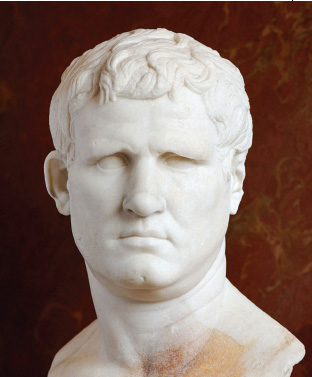
2. M. Agrippa (c. 64-12 BCE) was Imp. Caesar’s friend since his teenage years and grew to become his indispensable right-hand man, winning the pivotal battle at Actium and quelling revolts in Cantabria, Crimea and Illyricum.
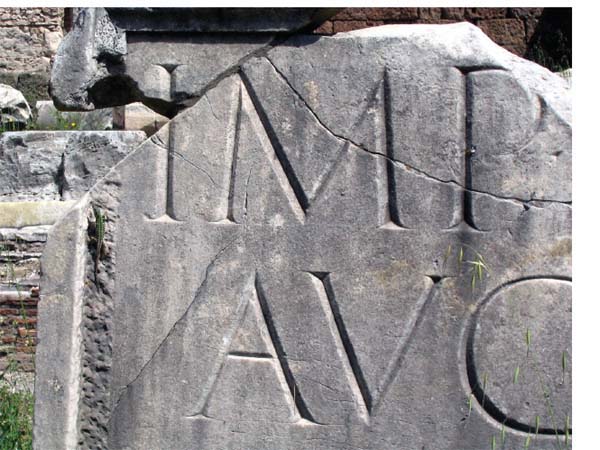
3. A fragment of an inscription from the Forum Augustum spells out the sponsor’s full name. From 38 BCE the heir to Iulius Caesar’s legacy brazenly used the acclamation ‘commander’ (imperator) as his first name.
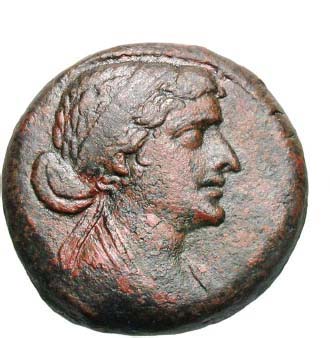
4. Queen Kleopatra VII of Egypt (69–30 BCE) became M. Antonius’ principal backer, providing him the means to field an army and navy against Imp. Caesar and Agrippa.

5. The ambitions and antics of triumvir M. Antonius (83-30 BCE) in the East brought him into conflict with Imp. Caesar. The ensuing civil war for supremacy engulfed the Roman world.
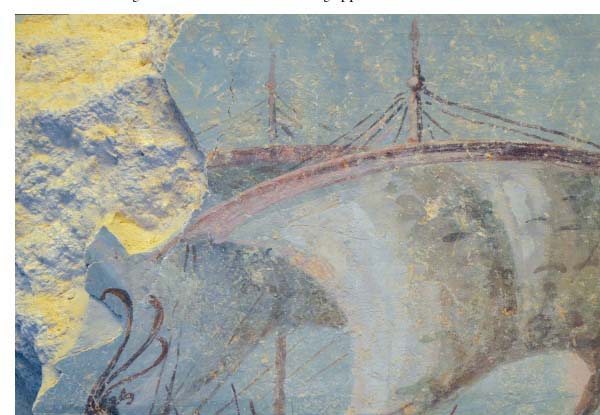
6. Originally an ally of Antonius, King Herodes (73–4 BCE) was denied his chance to fight in the Battle of Actium, depicted here in a wall painting from Herodium. He became a staunch supporter of Augustus and best friends with Agrippa.

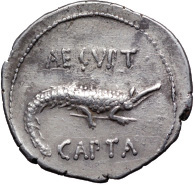
7. With the death of Kleopatra in 30 BCE Imp. Caesar ‘captured Egypt’ and made it a Roman province. Its riches cleared the war debt and enabled him to reward his soldiers and political supporters with largesse.
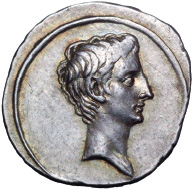
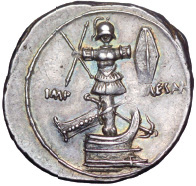
8. Imp. Caesar enthusiastically promoted his victory at Actium. This trophy is assembled with naval equipment captured from the fleet of Antonius and Kleopatra.
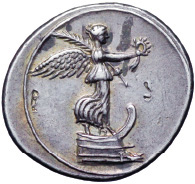
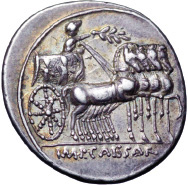
9. On one side of this coin winged Victory stands on the prow of a Roman warship. The other side shows Imp. Caesar driving his four-horse chariot (currus triumphalis) at his triple triumph.

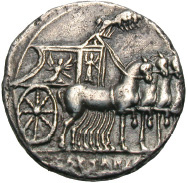
10. Imp. Caesar celebrated a triple triumph on 13-15 August 29 BCE. This coin shows the toga picta, tunica palmata and laurel crown worn by the triumphal commander along with the chariot he drove.
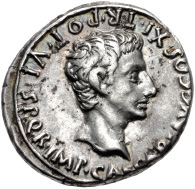
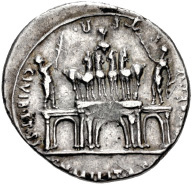
11. Imp. Caesar was voted triumphal arches for his victories. A single arch marked the Actian War. The Parthian Arch, erected on the Via Sacra, had three gates and statues.


12. By ending the Civil War Imp. Caesar ‘saved the lives of Roman citizens’. On 16 January 27 BCE the Senate was awarded him the corona civica (‘citizen’s crown’). It was permanently displayed above the door of the Palatium.

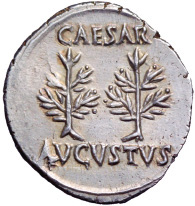
13. Augustus was permitted the privilege of growing laurel trees beside the front doorposts of the Palatium (his home on the Palatinus Hill) as tokens of his devotion and honour.
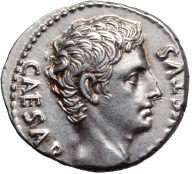

14. In 27 BCE the Senate awarded Imp. Caesar the title Augustus and the Shield of Virtue (clipeus virtutis) in recognition of his leadership qualities and achievements. (It is shown alongside the military standards later received from the Parthians.)
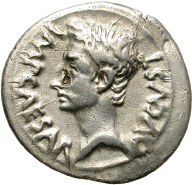
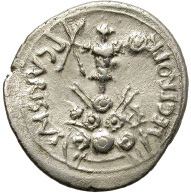
15. Augustus sought to complete the conquest of the Iberian Peninsula. His deputy P. Carisius celebrated his defeat of the Astures in 26/25 BCE on a coin showing a trophy erected at the site of the last battle.
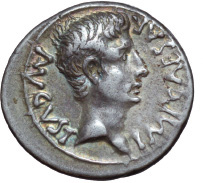
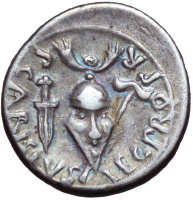
16. The mint at the newly established colonia for legionary veterans at Emerita Augusta produced coins showing war spoils seized by the army under the command of Legatus Augusti Pro Praetore P. Carisius.
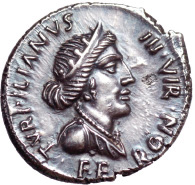
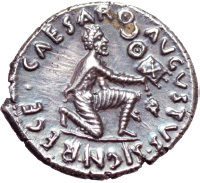
17. A Parthian shown kneeling and surrendering a Roman standard would remind the beholder that in 20 BCE Augustus secured the return of the military ensigns lost by Crassus and Antonius.
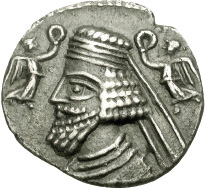
18. Frahâta (Phraates) IV, ‘King of Kings’, ruled Parthia 37-2 BCE. He agreed to a negotiated pact with Augustus – perhaps brokered by Agrippa – in 20 BCE and sent five of his sons as hostages to Rome.
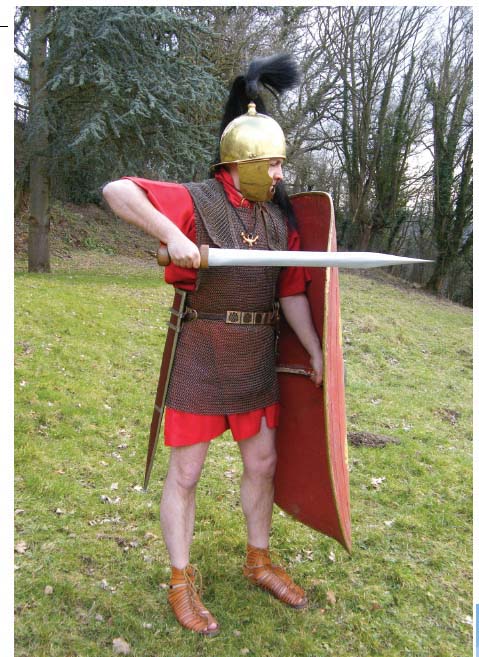
19. A re-enactor as a legionarius of the late first century BCE, wearing a bronze Montefortino-type helmet and chain mail shirt and carrying an oval shield, is shown in attack stance with unsheathed gladius Hispaniensis.
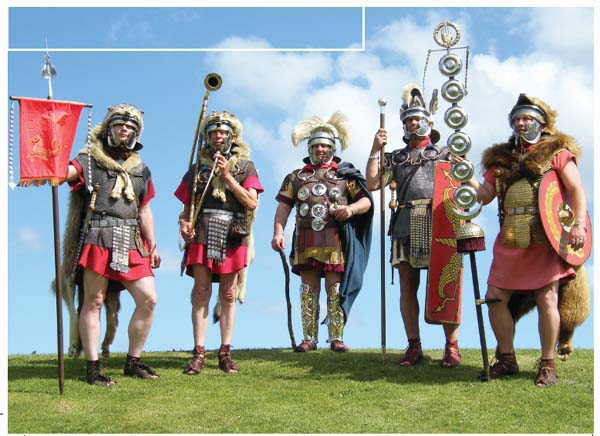
20. In 27 BCE Augustus effectively became commander-in-chief. In the legions under him the centuria of eighty infantrymen, led by a centurio and aided by his optio, was the basic combat unit. Other officers relayed commands by music and motions of a signum or vexillum standard. A legion comprised sixty centuries plus a hand-picked legatus, various senior officers and cavalry.
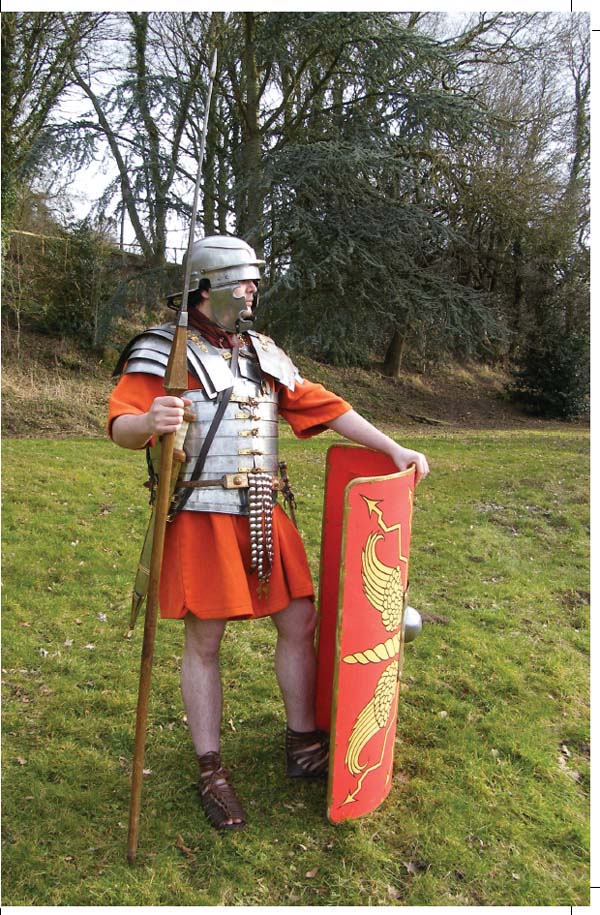
21. Technical innovation under Augustus led to the introduction of articulated, segmented plate armour and the Gallic-inspired iron helmet at the end of the first century BCE. The rectangular scutum gradually replaced the earlier oval design.
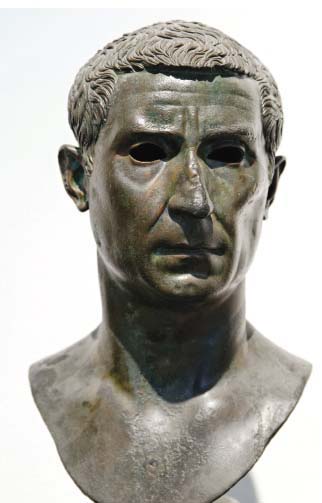
22. L. Calpurnius Piso (48 BCE-32 CE) was Legatus Augusti Pro Praetore of Galatia-Pamphylia. Over a three-year long campaign in Thracia he earned for himself the ornamenta triumphalia.

23. Ti. Claudius Nero (42 BCE-37 CE) was Augustus’ eldest stepson. He proved an able commander and succeeded Agrippa as his right-hand man. Augustus later adopted him as Ti. Iulius Caesar.
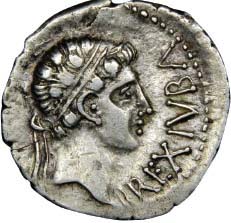
24. ‘REX IVBA’, King Iuba II of Numidia (52/50 BCE-23 CE) was one of the most loyal allies of the Romans. A noted author and scholar, in 25 BCE he agreed to exchange his homeland for Mauretania, which flourished under his rule.
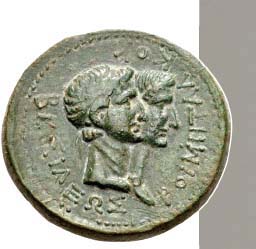
25. ‘ΒΑΣΙΛΕΩΣ ΡΟΙΜΗΤΑΛΚΟΥ’, King Roimetalkes I of Thracia, was a loyal ally of the Romans who actively supported Tiberius and Germanicus Caesar with troops during the Batonian War in Illyricum (6-9 CE).
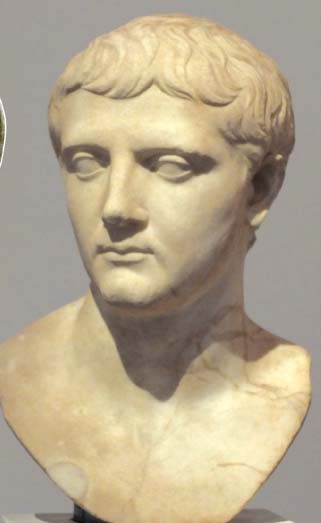
26. Nero Claudius Drusus (38-9 BCE) was Augustus’ youngest stepson. He proved his leadership abilities on campaigns in Raetia, Vindelicia, Noricum and Germania and was popular with the troops.

27. A coin celebrates the military successes of the Claudius brothers – Tiberius and Drusus – in Raetia, Noricum and Vindelicia in 15 BCE. The poet Horace also sang their praises.
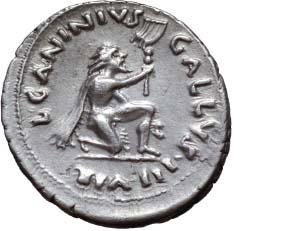
28. In 12 BCE Nero Drusus launched a war of conquest against the Germanic nations. A naked German warrior is shown kneeling and surrendering a native flag standard.
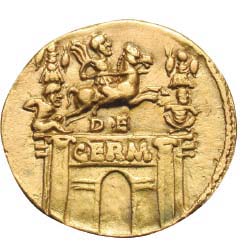
29. For his victories in Germania Nero Drusus was posthumously awarded an arch and the war title Germanicus. Atop the arch trophies flank a statue of the commander (who craved spolia opima) charging the enemy.

30. Though already dead at the time of the inauguration of the Ara Pacis Augustae in 9 BCE the frieze nevertheless includes M. Agrippa. He is shown velatus (with his head covered). Augustus is on the extreme left.

31. Among the members of Augustus’ family in this scene on the Ara Pacis Augustae are Tiberius (left), his brother Drusus (centre, wearing a paludamentum) and L. Domitius Ahenobarbus (right).
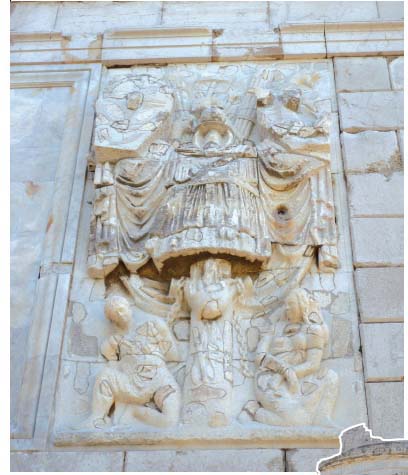
32. Inaugurated in 6 BCE, the Tropaeum Alpium commemorated the end of decades of campaigning by the Romans to subjugate the nations of the Alps. The full text of the inscription was preserved by Pliny the Elder in his Naturalis Historia.
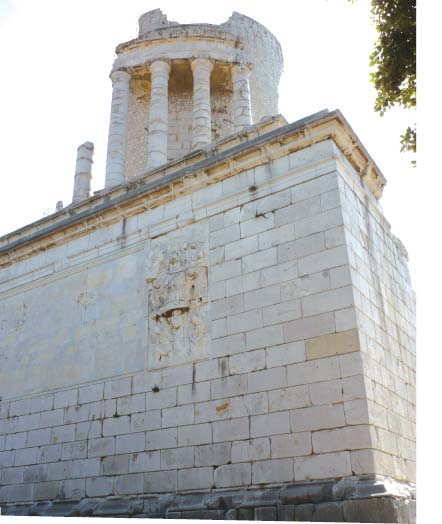
33. This monument celebrated the final victory over forty-five Alpine nations achieved under Augustus’ auspices. It features depictions of trophies of arms, armour and enchained men and women.
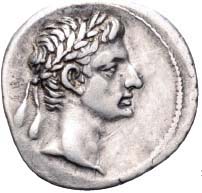
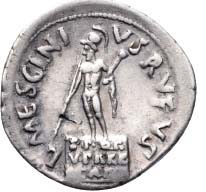
34. The Romans regarded themselves as a devout people. On this coin the moneyer L. Mescinius Rufus acknowledges the importance of war god Mars in religious observance.
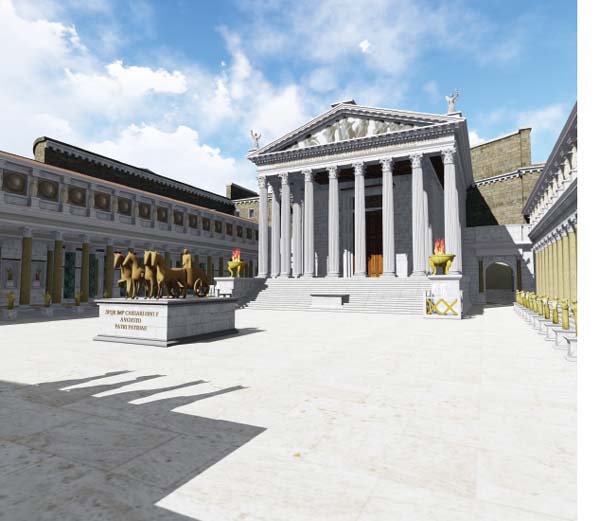
35. Opened in 2 BCE, the Temple of Mars Avenger (Templum Marti Ultori) was the centrepiece of the Forum Augustum in Rome. The military ensigns recovered from Parthia were kept here.
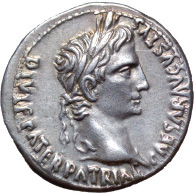
36. Agrippa’s eldest son was adopted by Augustus as C. Iulius Caesar (20 BCE-4 CE). Fêted by the Roman People Augustus had high hopes for him, but he ultimately proved a disappointment.
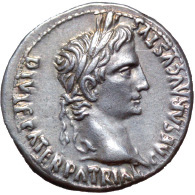

37. Upon reaching manhood and in preparation for a public career, brothers C. and L. Caesar were each in turn appointed princeps iuventutis and given spears and silvered shields in keeping with their status.
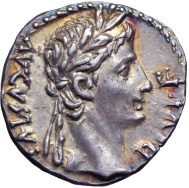

38. C. Caesar officially began his military career under the care of Tiberius on a punitive raid into Germania in 8 BCE. The troops were paid a bonus for ensuring the young man came to no harm during the campaign.
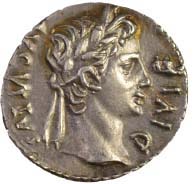
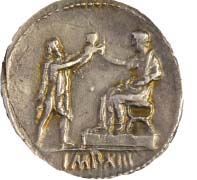
39. Officially surrendering to the Romans required that the defeated enemy hand over arms and hostages. Here a Germanic warrior presents a child to Augustus (shown as a magistrate) seated on a tribunal.
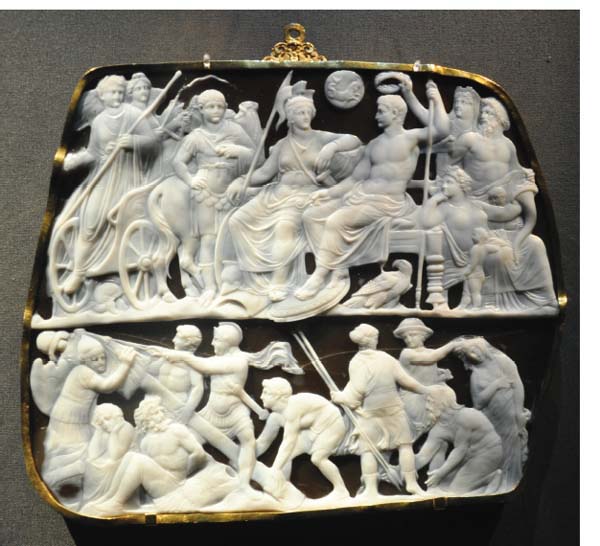
40. The lower segment of the Gemma Augustea – engraved after 10 CE – shows a group of Roman soldiers erecting a tropaeum. The captured arms and armour hang from an oak tree trunk in a tradition ascribed to the legendary Romulus.
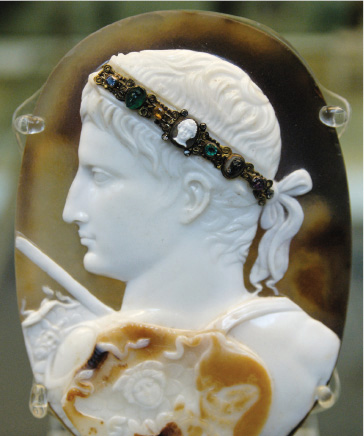
41. The ‘Blacas Cameo’ – engraved c. 20-50 CE – shows Augustus wearing a sword-belt (symbolising his military authority) and the aegis usually associated with the goddess Minerva.
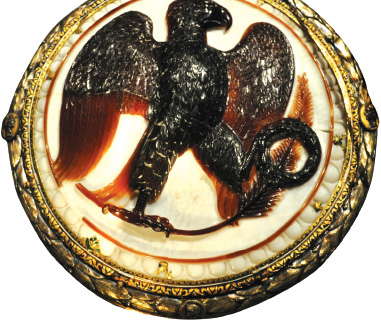
42. The ‘Eagle Cameo’ – engraved after 27 BCE – shows a golden eagle (the symbol of Jupiter) clutching a palm frond and a corona civica, evoking the victory honours bestowed on Augustus.
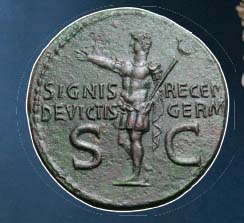
43. This iconic statue (purportedly from the villa of Livia at Prima Porta) may represent in symbolic form the moment when Augustus was acclaimed by his soldiers for recovering the Roman military standards from the Parthian king in 20 BCE.
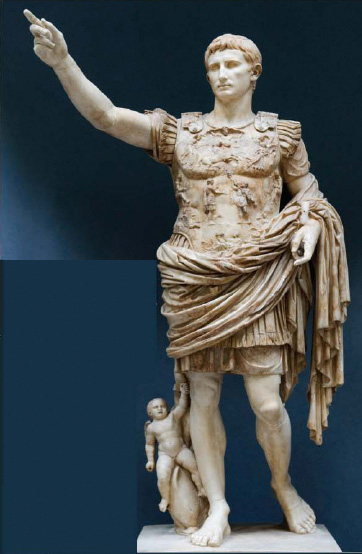
44. One of the three aquilae lost by P. Quinctilius Varus in 9 CE was retrieved seven years later by Germanicus Caesar. Augustus’ grandson is shown on this coin in the same victory pose as the statue from Prima Porta and carrying an eagle standard.